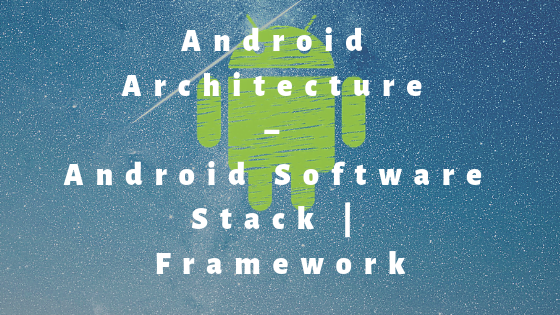In Android, the software stack or Android architecture is the combination of Linux Kernel, Native Libraries, Android runtime i.e. Dalvik VM, Application Frameworks and Applications.
Let us understand the android architecture using the figure below.

Linux kernel
Linux kernel is responsible for Memory management, File management, Scheduling, Security and other OS duties.
This is the kernel on which Android is based. This layer contains all the low-level device drivers for the various hardware components of an Android device.
Native Libraries
Native libraries are written in C/C++ and includes Media, SQLite, OpenGL, Graphics etc. These contain all the code that provides the main features of an Android OS
Some of these libraries are:
android.app
It provides application class, activity.
android.animation
It provides classes for animation.
android.content
It provides binder related classes for example Intent, Binder.
android.database
It provides database functionality (SQLite).
android.graphics
To handle graphics.
Android Runtime
Android runtime includes Dalvik VM. The key figure in Google implementation of the JVM is Dan Bornstein, who wrote the Dalvik VM.
Dalvik is the name of a town in Iceland. Dalvik VM takes the generated java class files and combines them into one or more Dalvik Executable (.dex) files.
The goal of Dalvik VM is to find every possible way to optimize the JVM for space, performance and battery life.
Application frameworks
Application framework provides all manager for development like Activity Manager, Location Manager, and Notification Manager etc.
It exposes the various capabilities of the Android OS to application developers so that they can make use of them in their applications.
ActivityManager
It manages the Application Lifecycle and Activity stack.
LocationManager
All locations are generated by LocationManager. (Latitude, Longitude, Timestamp etc).
NotificationManager
It allows applications to show alerts and notifications to the user.
And at last, at the top Applications layer, any applications that you write are located. Like the calculator, calendar, camera etc.
